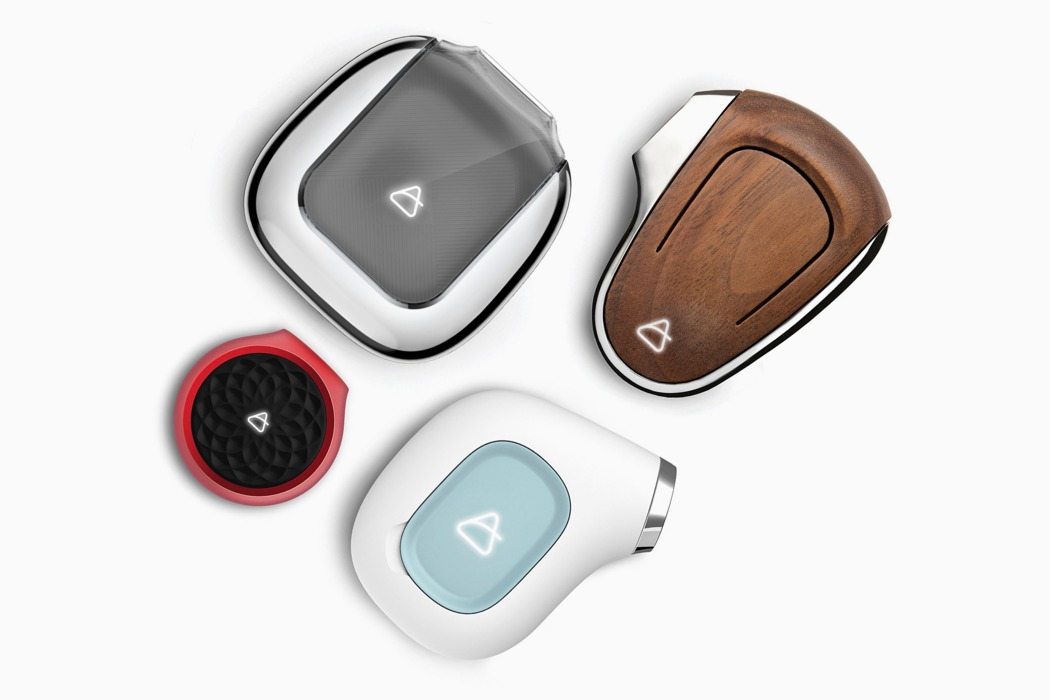
Inhaler re-designs are something we see a lot of, but the designers behind Aria have taken a slightly different approach for their project. Having analyzed the shortcomings that current inhalers have, and identified that both the stigma that they carry and their “throwaway” nature are two of their main issues, they created not one, not two, but four inhalers.
As the name suggests, the Aria Youth is targeted towards youngsters; it features a rubberized body that will protect it from the inevitable drops that will be thrown its way. This, combined with the large paddle accusation makes this product a far more suitable alternative.
Asthma can greatly impact athletes, so the conveniently-compact Aria Sport is perfect for them. As is the same with the other three, it utilisers vape technology in order to administer the drugs both easily and effectively. The final two designs focus around removing the stigma that is caused by the medical-aesthetic that the conventional inhaler carries; these clean and modern alternatives are a welcomed change and blend perfectly into today’s fashion.
Designers: Ryan Lee Sanderson, Justin Arsenault & Thrive Design
“The form and function of the common rescue inhaler has hardly changed in the past few decades. The devices are about as subtle as a sledgehammer! We explored how we could update the technology and evolve the form to help users feel better—health-wise, and their connection to the device,” Sanderson explains.
Our team created four different Aria inhalers based on four prominent personas and their needs: Youth, Contemporary, Heritage, and Active. The Youth device is petite and made of silicone to increase dosing precision and withstand drops. The Contemporary model looks clean and modern—more like everyday tech than a medical device. The Heritage product connects with older users through a wood shell body and features a larger paddle actuator. The Sports option is designed to appeal to active asthmatics, with a miniaturized form, attachment clip and waterproof body for ultimate durability on the go.
The Aria Youth is kid-sized. It has a rubberized body to not only survive impacts but also to increase grip and precision during dosing. The large paddle actuation makes the whole process easier by removing precision from the equation.
Aria Contemporary looks clean and modern. Its horizontal orientation allows for a more discrete holding position, while its tech-forward aesthetic blends into the current technology landscape.
Current inhalers felt foreign and embarrassing to users, so to create a connection, we updated the devices in two significant ways. First, by incorporating vape technology, which allows for flexibility in the drugs that can be administered and makes dosing easier. Secondly, we rethought form, creating prototypes that look more like small sculptures than medical devices, can be palmed discreetly, and are made of materials that feel high quality, less disposable and easier to feel attached to—wood, porcelain, and aluminum.
Aria Sport is designed for active asthmatics with a miniature anodized aluminum body, attachment clip, and is waterproof for ultimate durability on the go. Its large diameter actuation pad gives users a bigger area to depress during a time of emergency, removing the need for focus and precision.
Aria Heritage connects with long-time asthma sufferers through a timeless inset wood and aluminum body meant to weather over time, like an old compass or pocket-knife. It features a larger paddle actuator for older hands.
To officially bring the inhaler into the 21st century, we added an app that works in conjunction with the inhaler too, well, make life easier for an asthma sufferer. The dashboard features information about weather and air quality conditions in their area that can impact their breathing. And the digital humanization is taken one step further: With data inputs unique to the user’s ailments and lifestyle, it synthesizes this information and customizes it through the filter of their life, providing insights and recommendations that are tailored to them and their needs. (They can even ask it questions, like “Hey, I’m about to go for a run…are conditions right?”) A “find my inhaler” function, and alerts before medicine expires — which users can reorder straight from the app — round out the UI/UX component. The gist? By combining insight-driven design with intuitive technologies that can further personalize a product to benefit the user and better their experience, we can all truly breathe easier.